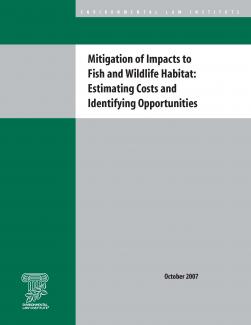State Outdoor Recreation Offices Garner Rare Bipartisan Support

States around the country are establishing outdoor recreation offices to capitalize on a growing trend—Americans are increasingly participating in outside activities that range from fishing to skateboarding to gardening. According to the National Council of State Legislatures, a total of 18 states around the country, spanning the political spectrum, have created these units, known by the acronym ORECs. The states establish their offices using a variety of legislative, executive, and budgeting authorities and house them in varying departments, including those responsible for economic development, parks, and tourism.
Outdoor recreation participation reached a high-water mark in 2022, according to the Outdoor Industry Association. The participant base grew over 2 percent to more than 168 million citizens—55 percent of the U.S. population over six years of age. And the growth occurred across 80 percent of outdoor activity types. OIA also reports that the participant base became more diverse with “increases in participation among Black people, Hispanic people, and LGBTQIA+.”
To be sure, a prime motivator in establishing ORECs is economic. The outdoor recreation industry is big business, constituting 1.9 percent of the gross domestic product in 2021, at $454 billion—an increase of 18.9 percent in its annual rate as compared to 5.9 for the U.S. economy overall. According to Headwaters Economics, the sector is double the size of motor vehicle manufacturing and triple the size of oil and gas development. For some states, such as Hawaii and Montana, the outdoor recreation industry constitutes over four percent of their GDP.
Although ORECs focus on supporting the outdoor recreation industry, advancing conservation is integral to their mission. As a Center for American Progress report explains, outdoor recreation “holds an important opportunity for states, cities, and towns to embrace policies that protect their lands and waters,” as these polices are “linchpins” driving the industry. OIA’s state policy platform reflects this synergistic approach by emphasizing that climate change “poses a significant threat to the outdoor industry” and that a “healthy and growing outdoor industry depends on continual outdoor access for those of all abilities, ages, and backgrounds.”
Similarly, the Confluence of States, a bipartisan organization made up of many of the states that have established ORECs, seeks to provide not only “a platform to grow the outdoor recreation industry,” but to “protect our nation’s wild places and transform conservation into a driver for economic prosperity.”
Nevertheless, CAP, which recognizes ORECs as a “creative” tool for expanding the industry, emphasizes the importance of “conservation and equity as the basis of a strong outdoor economy” and warns that ORECs “would be remiss if they focused solely on tax breaks or business recruitment.”
Furthermore, CAP points out that “while recreation and conservation are very closely aligned, some conflicts remain—particularly in sensitive habitats and surrounding cultural resources.” Accordingly, CAP recommends that “some lands’ primary purpose must remain for conservation and wildlife habitat as opposed to recreation or resource extraction.” Furthermore, ORECs “can help to ensure that recreation is done in a sustainable way, so future generations can continue to enjoy the outdoors.”
The growing number of outdoor recreation participants may help achieve this laudable goal. A National Park Service article recognizes that managing outdoor recreation “is an increasingly complicated challenge,” but concludes that the “silver lining is that more nature lovers enjoying the out-doors means more nature lovers likely willing to help nature.”
And there is research that supports this proposition. Miller, et al., in a chapter in a U.S. Forest Service publication entitled “Outdoor Recreation and Environmental Stewardship: The Sustainable Symbiosis,” conclude: “Based on recent research on the connections between outdoor recreation and stewardship, we suggest that public land managers view recreationists as stewards of, rather than as threats to, the lands they manage.”
Ironically, the number of outdoor recreation participants may increase substantially due to climate change. In a paper published in the American Meteorological Society Journal, Willwerth, et al., observe that participation in outdoor recreation activities is generally lowest on the coldest days and highest on moderately hot days. Consequently, they predict a significant increase in outdoor activities in the future due to fewer cool days and a greater number of moderate and hot days. Their model estimates participation in outdoor recreation “will increase by 88 million trips annually at 1°C of warming.” Not surprisingly, the predicted increase is attributable largely to participation in water sports.
State Outdoor Recreation Offices Garner Rare Bipartisan Support.
